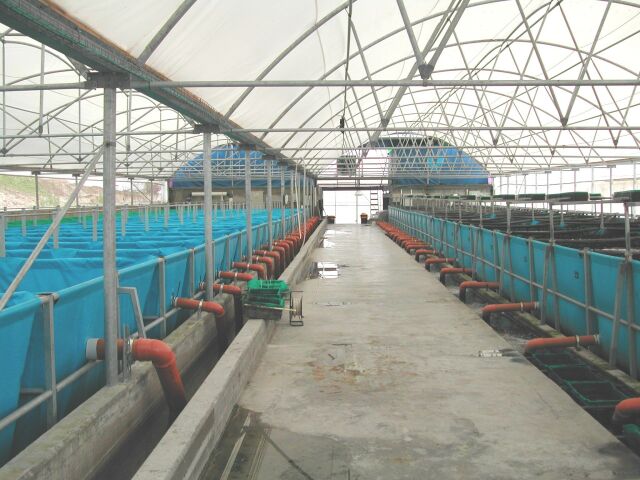Science News
Next Gen Fish Farming
February 21, 2013

It's no secret that the world’s human population is growing at a dizzying speed. Seven billion people currently reside on the planet, with nine billion projected by 2050. How will we ensure that all of us receive proper sustenance—especially the protein our bodies and brains need so much?
At a session at last week’s AAAS meeting, scientists tried to answer that question by evoking Jacques Cousteau’s vision of “aqua-farming replacing the hunting of the sea.”
Fish farming has grown by 6% per year over the past 30 years, according to Jeffery Silverstein of the USDA's Agricultural Research Service. Sadly, practices have not improved at a pace in step with industry growth. But that’s finally shifting.
Fish farming’s well-publicized problems include the cost and carbon footprint of feedstock used to grow the fish, the spread of disease into wild populations, and the toxins produced as a byproduct of housing too many fish in too small of a space.
Because many of the fish most popular with consumers are carnivores themselves, aqua-farming often involves feeding the growing school with quality protein sources in the form of smaller fish—protein that could instead feed people. To tackle this apparent waste, two speakers, KeShun Liu, also of USDA’s Agricultural Research Service, and Margareth Overland from the Norwegian University of Life Sciences, are each looking into plant-based resources for fish feed that won’t double for human food. Overland is working with microbial ingredients that can be mass-produced: yeast and algae. Yeast can be grown on the organic matter of broken-down spruce trees, in a similar process to making ethanol, and algae flourishes in the presence of sunlight and CO2, both readily available at no cost.
She found that this microbial feed supports growth in salmon and benefits their digestive systems. “It’s not too different from our probiotic yogurt,” she says.
Silverstein and Steven Summerfelt discussed fish farms that have demonstrated best practices in isolating fish populations, leading to healthier harvests and healthier habitats. Some catfish farms are seeing positive results with a split-pond technology whereby only 20% of the tank capacity contains fish, with 80% devoted to treating, recirculating, and reusing water. At 15,000 fish per acre, harvest rates are impressive. A farm of yellow perch in Albany, Indiana, is finding success with land-based, closed containment systems instead. In a smart, sustainable move, this farm is employing fish waste as a form of fertilizer.
Summerfelt used examples such as these to inform the establishment of fish farms for popular Norwegian Atlantic salmon. His system is already in use by several companies around the world, and is looking to expand quickly.
These scientists argue that aquaculture will be sustainable as it scales up, as long as we continue to address the challenges and minimize the impacts on water, land, and wild populations. We’re on our way…
Image: Daben2000/Wikipedia